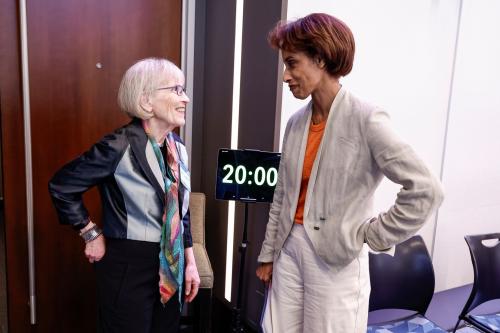If you want more content like this, subscribe to our newsletter.
This week in Class Notes:
-
- Welfare reform in the 1990s reduced the amount of time parents spent with their children and the quality of their relationship, with the biggest impact on boys.
- Providing free access to long-acting birth control in Colorado reduced teen birth rates by 20% within 7 miles of a clinic.
- Matching students with mentors reduced truancy among middle-schoolers by over 20% in Chicago, but in a costlier program than the norm.
- This week’s top chart shows that solo dads are more likely to parent teens, while solo moms are more likely to parent tots.
- Democrats want progressive spending. Republicans want tax cuts. Matthew Yglesias thinks Biden should avoid forcing Republicans to “eat their peas,” and do both.
- Finally, check out our new piece calling for action on the challenges faced by Black men.
The effect of Clinton-era welfare reform on parenting
Did welfare reform in the 1990s, which effectively reduced cash assistance to many low-income mothers by devolving authority to states, affect parenting? Yes, according to Nancy Reichman and her co-authors. Using the 1979 cohort of the National Longitudinal Survey of Youth and state variation in implementation to investigate the policy’s effect, they find that welfare reform led to a reduction in parent-child bonding, in children feeling close to their moms, and in moms knowing their children’s whereabouts. Not all children were equally affected by the reform, however. The effects are especially concentrated among boys, confirming a swath of literature suggesting that boys are more sensitive to stressful conditions than girls.
Colorado’s free contraception program
In 2009, Colorado expanded access to free long-acting reversible contraceptives (like IUDs) for low-income women across the state. Andrea Kelly, Jason Lindo, and Analisa Packham find that teen birth rates within 7 miles of Title X clinics fell 20% after the initiative took effect. Media also played a significant role in reducing unintended pregnancy rates; while the initiative received large-scale media attention, it also significantly reduced the birth rates among women under 30. In all, the authors estimate that the program prevented about 6,800 unintended births over 7 years.
Do truancy prevention programs work?
School districts often face budget pressure to let some programs, like those aimed at reducing truancy, slip through the cracks. But is this the right decision for school districts aiming to improve their graduation rates and student engagement? Jonathan Guryan and his co-authors randomly assigned students in the Chicago Public Schools to participate in Check & Connect, a fairly intensive school-based program that connects marginalized students and their parents with mentors and encourages school engagement. The program did not improve attendance among elementary school students, but it did reduce absences among middle school participants by 20%— at a cost of around $400 per additional day of attendance. By comparison, the district’s mail program notifying parents of their student’s absence cost less than $12 per additional day of attendance.
Top chart: Solo fathers are more likely to parent teens
This week’s top chart from the U.S. Census Bureau shows the age distribution of children living with one parent; children who live with solo dads are more likely to be teens than children who live with solo moms, who are more likely to be toddlers.

Choice opinion: Biden should throw an ice cream party
“A bipartisan deal is President-elect Joe Biden’s only hope to get the kind of enormous Covid-19 relief bill and the dream of an ‘FDR-size presidency’ that he wants. But bipartisanship doesn’t mean Democrats should return to the deficit-slashing, grand-bargaining approach that failed under President Barack Obama… There is an alternative to ‘eat your peas’ politics — a push for a different kind of bipartisan deal in which, rather than giving up on progressive spending priorities, Biden tries to secure support for them by giving in to big, GOP-friendly tax cuts… Call it an ice cream party, the opposite of eating your peas,” writes Matthew Yglesias for Vox.
Self-promotion: The case for a New Deal for Black men
The United States is experiencing a once-in-a-generation moment of racial reckoning, and policymakers should act. Black men run the gauntlet of a specific racism at the intersection of race and gender. In our latest piece, we underscore the need for action by highlighting and discussing Black men’s outcomes in eight critical areas. For example: 28% of Black men ages 25-29 have a bachelor’s degree, compared to over 30% of Black women and over 40% of white men and nearly half of white women; Black men were twice as likely to be unemployed as white men in September 2020; and Black men are overrepresented among prisoners by a factor of five (they represent 6% of the adult U.S. population, but 32% of sentenced state and federal prisoners).







Commentary
Class Notes: Welfare and parenting, free contraception, and more
November 25, 2020